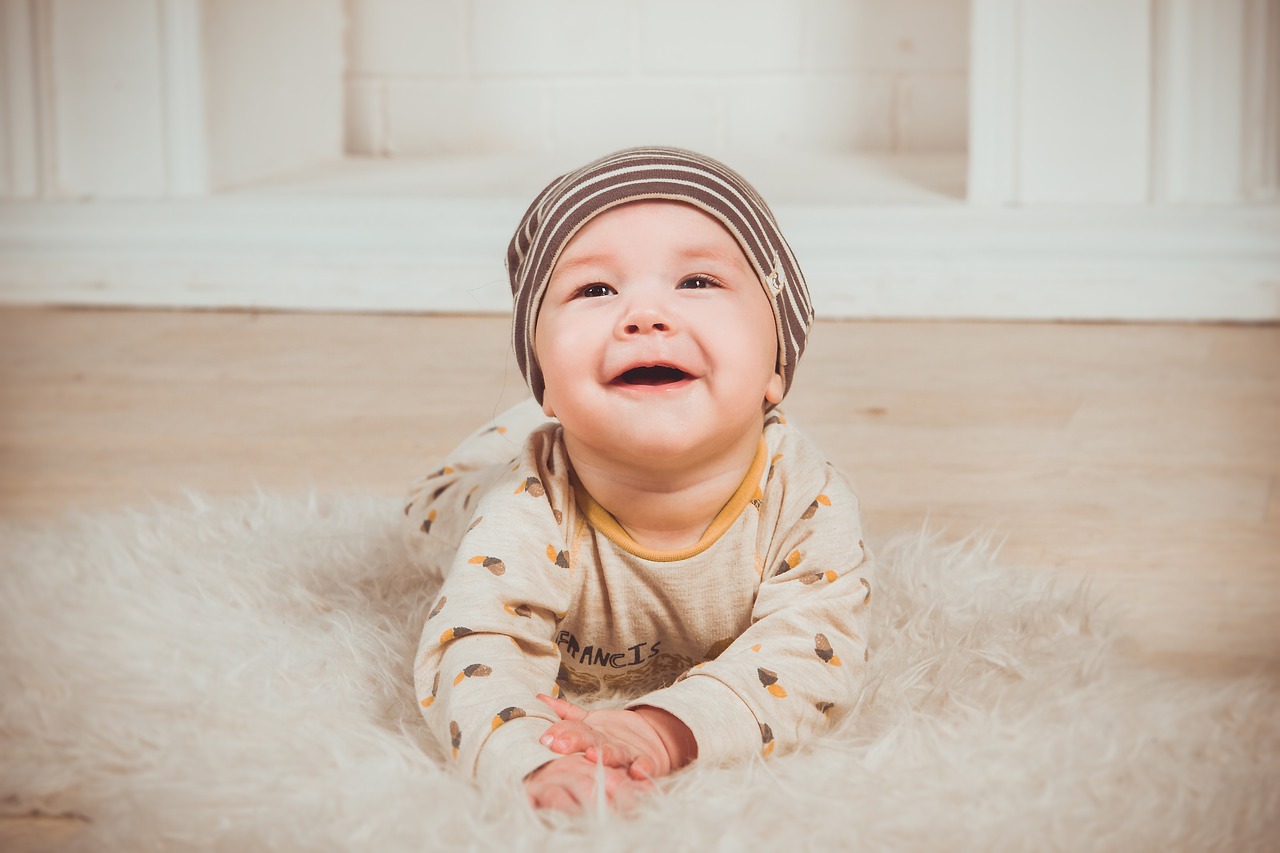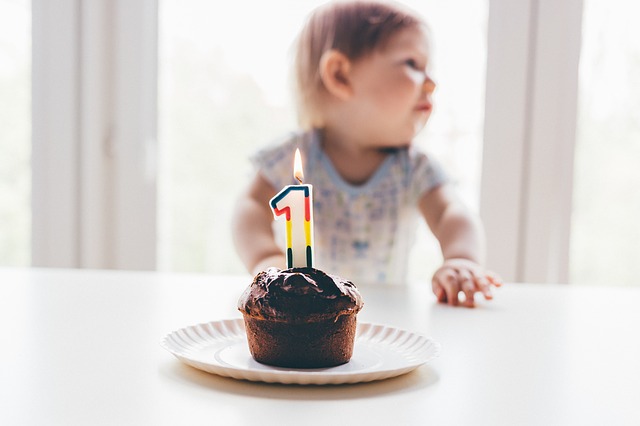Your First Year

What happens to the human body in the first 12 months of life
We are born well before we’re ready to fend for ourselves, but we learn faster in our first three years than we will for the rest of our lives. So how do we get from vulnerable newborns unable to lift our own heads to walking, talking toddlers?
BIRTH
Babies enter the world with a lot of growing left to do. From around 35 weeks of pregnancy babies start becoming cramped. As the foetus gets bigger it demands more and more energy, and there’s only so much that the mother can supply. Before they are born, their growth starts to slow.
Entering the world for the first time is a shock to a baby’s system, and the first days of life are critical. Until the moment they emerge from the womb, their mother’s body has supported every one of their needs. She maintains a constant temperature, digests food to supply nutrients and breathes to supply oxygen. She also deals with waste and fends off infection. Then suddenly the baby has to fend for itself.
As it hits the cold air of the delivery room, a powerful inward breath pulls its lungs open and fills them with air. In the safety of the womb, all the oxygen the baby needed came from the umbilical cord. The lungs were full of amniotic fluid and the heart diverted blood past them through a hole called the foramen ovale and a tube called the ductus arteriosus. Suddenly the baby needs to breathe. The hole in the heart slams shut and blood rushes into the lungs. Within hours or days after birth the tube, and another that carried blood from the umbilical cord to the heart (ductus venosus), closes too.
The other organ systems also spring into action. The baby has been practising breathing and swallowing in the womb, and the kidneys have already started working. Within 24 hours the gut starts moving, passing a dark green or black, tarry substance called meconium. It contains bile, mucus, amniotic fluid and anything else the baby has ingested in utero. Once this fluid is out of the way milk digestion can begin.
The newborn stomach is tiny — barely the size of a marble — so the baby needs to wake every few hours to feed. It can only take a few small mouthfuls at a time. The mother produces a thick, golden-yellow breast milk called colostrum. It’s packed with energy but is lower in fat than normal breast milk, which newborns can find hard to digest. Instead, it’s full of protein — perfect for a growing baby.
Colostrum has a mild laxative effect, which helps to get the baby’s gut moving, and it comes with a secret weapon: antibodies. These neutralise bacteria and viruses, sticking them together and triggering their destruction. Throughout pregnancy they cross from mother to baby via the placenta, but this type of immunity is only temporary. The baby will be able to make its own, but this takes a few months. In the meantime, colostrum provides a boost, helping to stave off infection.
The newborn has some tricks of its own to help it survive this vulnerable time. Though they have a lot to learn, babies are born with some vital reflexes built in. These include simple things like blinking, swallowing and yawning, along with more complicated responses. The rooting reflex makes the baby turn their head or open their mouth when something touches their cheek or lip, and the suck reflex makes them suck if something touches the roof of their mouth. These instincts help with feeding.
Then there are the Moro reflex and the palmar grasp reflex. The first happens when a baby feels as if they are falling. They extend their arms and legs and arch their backs before curling up. The second makes the fingers and toes curl if you touch the palm of their hand or the soles of their feet. Together they help the baby to survive.
FIRST WEEKS
Brand new babies can hear and respond to noises and are born with the beginnings of communication. They will turn their head towards light and sound, make out the face of the person holding them and cry when they are in need. It only takes a few weeks for these skills to start to improve.
They rapidly start to recognise the voice of their mother, and soon they begin to make different noises, cooing and gurgling as well as crying. For the first few weeks babies can only focus on objects right in front of their faces, and their eyes frequently cross. At this stage their hand-eye coordination is poor.
Very young babies will investigate their own hands and fingers, but they can’t yet use them properly, and they often keep their hands in fists. Inside, their bodies are undergoing rapid change fuelled by milk. If the baby is being breastfed, normal breast milk has now replaced colostrum. It’s higher in fat and contains enzymes that help the digestive system to access the nutrients. It’s also packed with sugars. Not only do these provide energy, they also help friendly bacteria to colonise the large intestine.

TWO MONTHS OLD
Babies spend much of their time eating and sleeping, and their bodies start to grow rapidly. In the womb, cells divide constantly to form tissues and organs, but after birth growth shifts. Rather than making new cells, babies increase the size of the cells they already have.
The tissues of newborn babies are very different to those of children and adults. There is more fluid around their muscle and nerve cells, and they have less cytoplasm inside. As the baby develops this balance shifts. Muscle cells expand, filling with cytoplasm and molecules involved in contraction. Nerve cells extend, strengthening connections and making new ones, and the amount of fluid outside these cells starts to fall.
With newfound strength, babies learn to push up with their hands when placed on their tummies and start to hold their head a little steadier, their movements becoming less jerky and more coordinated. Fat continues to quickly build up under the skin, helping to keep the infant warm. By the two month mark babies are already starting to develop social skills. They begin to follow things with their eyes and recognise people at a distance, and they begin to smile and laugh.
HALFWAY THROUGH
Babies can finally hold their heads steady at around 16 weeks of age. They will also start to push down with their legs if they’re held above a hard surface, and by six months they can roll over, push up to a crawling position and even stand with support. At around this time babies also begin to use their hands and eyes together. They reach for objects and rake with their fingers to grab them, and they start to use their mouths to explore objects further. With all this extra strength and coordination, the grasp and Moro reflexes are no longer needed. These early fail-safes fade away.
Babies start to learn to pass toys from one hand to the other. Their eyesight improves too. By this stage they are becoming more perceptive to the subtleties of different colours, and they start to copy facial movements. They recognise and express emotion and begin to find their voice. They blow raspberries and start to make consonant sounds like ‘ba’, ‘da’ and ‘ga’, using noise to get attention and to express themselves. They will also start to recognise words, especially their own name.
To fuel all this progress, six-month-old infants often switch to solid food. As the baby grows, the fat content of breast milk has been increasing from about 2g/dL of colostrum (grams per decilitre, equivalent to 100 millilitres) to 4.9g/dL. It has provided energy and contributed to a growing store of fat under the skin. But now the digestive system is ready for more.
A newborn’s digestive organs are not only smaller than an adult’s, but they also work differently. They make different quantities of enzymes and bile and they operate at a different pH. But at six months old things are starting to change. The first teeth come through, starting with the bottom front teeth then the top. Swallowing improves and the digestive system will start to produce enzymes to break down complicated meals.

FIRST BIRTHDAY
By their first birthday, babies are starting to develop complex behaviours. They have favourite things and favourite people. They start to understand ‘object permanence’ — the idea that objects and people exist even though you can’t always see them. They look for hidden objects and they begin to grasp the effects of gravity by learning to drop things and watching how they fall to the ground. They also begin to respond to requests and make demands of their own. They will copy and use gestures like waving, pointing and head shaking.
By now they will also understand familiar words and follow simple directions, as well as being able to help with tasks like dressing. Most importantly of all, they will start to communicate using ‘babble’. Their coordination has by now improved too. The grasp reflex is long gone, and they can move objects easily from one hand to the other. They can pick up small things between their thumb and forefinger and they will test new objects by shaking and banging. They will begin cruising, holding on to objects and moving around on two legs. Some may even take their first steps.
The hole that shunted blood through the heart when they were born is now fully healed over. Back teeth are starting to come through and the digestive system is processing full meals. The lungs have more air sacs, increasing surface area for gas exchange, and the brain has developed billions upon billions of new connections.
Over the coming months, babies transform into toddlers. As they begin to develop their understanding of the world, they start wanting to be more independent. They learn to walk, they start to talk and they even play games. Human babies are born tiny and vulnerable, but in a few short months they are already well on the way to growing up.
This article was originally published in How It Works issue 107, written by Laura Mears
For more science and technology articles, pick up the latest copy of How It Works from all good retailers or from our website now. If you have a tablet or smartphone, you can also download the digital version onto your iOS or Android device. To make sure you never miss an issue of How It Works magazine, subscribe today!





